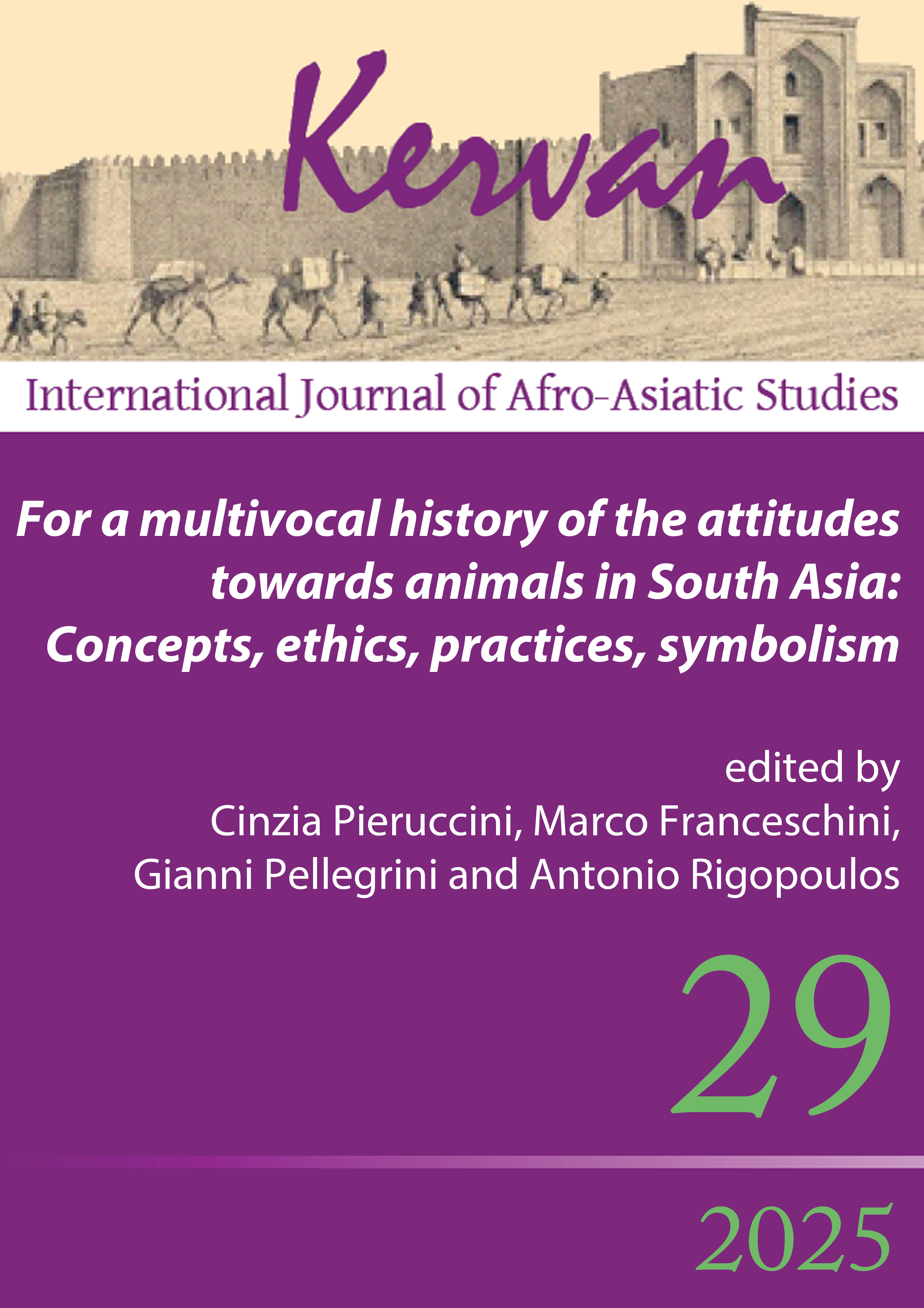The musk deer and its musk in classical Indian literature
DOI:
https://doi.org/10.13135/1825-263X/12119Abstract
The musk deer (Moschus chrysogaster Hodgson) is a small hornless animal, only 40–60 cm high. It lives in the Himalayas and Tibet between 2100 and 3300 m. The caudal musk gland of the adult male provides the famous aromatic black substance known as musk which is traditionally much used in perfumery.
After a short introduction about the animal and its habits, its role in Indian classical literature is discussed. It is missing in the Veda and epics (except one short mention in the Mahābhārata), but since the early first millennium it it rather often mentioned. It is variously called karāla, kastūrīmṛga, and mṛganābhi. Part of the accounts are rather fanciful.
The second part of the article concentrates on musk itself, Sankrit kastūrikā, also mṛgamada and kuraṅgamada. It was variously used perfuming the body, clothes, and even as a condiment added to drinks. Physicians mixed it in various medicines.
Finally, the role of musk in ancient international trade is discussed. In the Graeco-Roman world it became known in the fourth and fifth century and later on it was also much appreciated in the Islamic world. Its name, Greek μόσχος, Latin muscus, is probably borrowed from Persian (Middle and New Persian mušk ‘musk’) as muṣka in Sanskrit means ‘testicle.’ However, it seems that also in India the musk gland was occasionally confused with testicles.
Downloads
Downloads
Published
Issue
Section
License
Gli autori che pubblicano su Kervan accettano le seguenti condizioni:
- Gli autori mantengono i diritti sulla loro opera e cedono alla rivista il diritto di prima pubblicazione dell'opera, contemporaneamente licenziata sotto una Licenza Creative Commons - Attribuzione che permette ad altri di condividere l'opera indicando la paternità intellettuale e la prima pubblicazione su questa rivista.
- Gli autori possono aderire ad altri accordi di licenza non esclusiva per la distribuzione della versione dell'opera pubblicata (es. depositarla in un archivio istituzionale o pubblicarla in una monografia), a patto di indicare che la prima pubblicazione è avvenuta su questa rivista.


 The articles that have appeared on Kervan since 2016 are rated as Class A in the system of National Scientific Qualification (ASN, disciplines 10/N1 and 10/N3).
The articles that have appeared on Kervan since 2016 are rated as Class A in the system of National Scientific Qualification (ASN, disciplines 10/N1 and 10/N3). The journal has been approved for inclusion in DOAJ. The DOAJ listing of the journal is available at
The journal has been approved for inclusion in DOAJ. The DOAJ listing of the journal is available at  The journal has been approved for inclusion in ERIH PLUS. The ERIH PLUS listing of the journal is available at
The journal has been approved for inclusion in ERIH PLUS. The ERIH PLUS listing of the journal is available at  Kervan was just accepted for indexing in SCOPUS. This important milestone ensures that articles published in Kervan are easily found when searching for library, archives and Information science and it enables Kervan authors to keep track of how often their article has been cited by others.
Kervan was just accepted for indexing in SCOPUS. This important milestone ensures that articles published in Kervan are easily found when searching for library, archives and Information science and it enables Kervan authors to keep track of how often their article has been cited by others.
